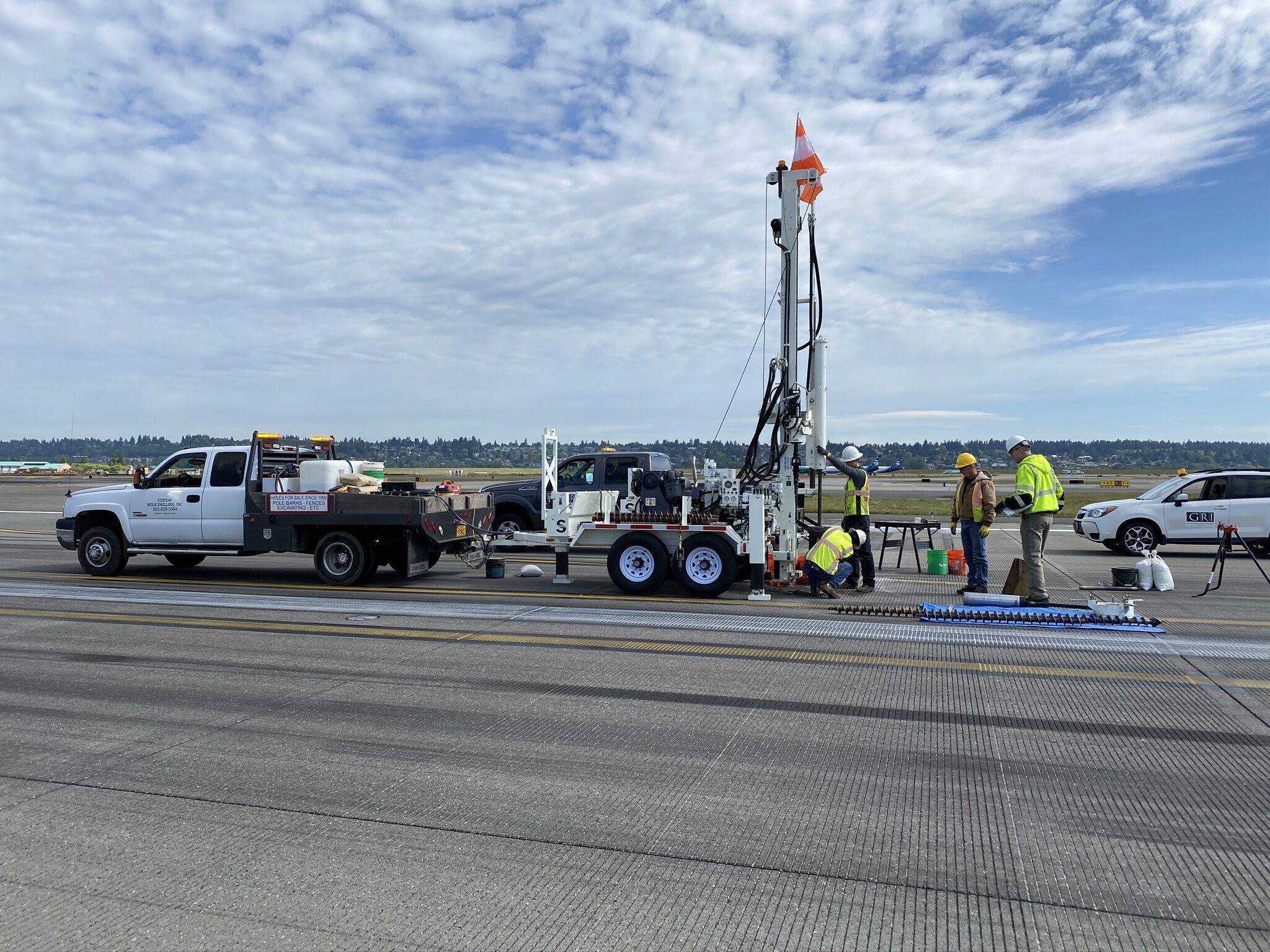

Port of Portland, South Runway Seismic Mitigation
Situated on 700 acres, Portland International Airport has two main runways, each running parallel in a northwest-southeast alignment. One is north of the terminal, along the Columbia River, and the other is south of the terminal. Following the events of the 2011 Tohoku earthquake in Japan and damage seen at the Sendai Airport as well as evaluations completed as part of the Port wide seismic risk assessment, the Port commissioned a more detailed study to evaluate the runways and identify approximately 6,000 feet of one runway for seismic hardening.
As part of a previous geotechnical on-call, GRI completed Phase 1 of the runway evaluations. This work including the completion of 26 Cone Penetrometer Tests (CPT), liquefaction analyses, lateral spreading analyses, conceptual level ground improvement mitigation alternatives, and estimated construction costs related to various ground improvement schemes. Out of this work, it was identified that the eastern portion of the South Runway presented the ideal location from a geotechnical perspective for seismic hardening and could likely be accomplished with a partial depth ground improvement program.
Following completion of the Phase 1 work, the Port elected to move forward with design (Phase 2) for mitigating the eastern 6,000 feet of the South Runway. GRI was selected to complete the Phase 2 work on the South Runway which included a focused exploration and laboratory program. This program included the completion of drilled borings, CPT’s and Flat Plate Dilatometer Soundings (DMT). Additionally, cyclic laboratory testing was completed on samples of the relatively soft silt encountered at the site. Based on the explorations and laboratory testing, GRI developed updated mitigation alternatives for the South Runway, targeting a partial depth ground improvement mitigation that balances cost and performance while meeting the Ports overall resiliency goals.
Concurrent to the Phase 2 work, GRI worked collaboratively with Oregon State University on a blast liquefaction study. Blasting, which followed the drilling of boreholes and the installation of instruments, occurred on three consecutive days in October 2018. The detonations were completed in 40-foot and 90-foot-deep blast casings. These tests were invaluable, confirming previous assumptions and analyses completed by GRI for the South Runway regarding impacts from deep liquefaction.
Location: Portland, Oregon
Owner: Port of Portland
Market Sector: Aviation, Ports and Waterfront
Services: Geotechnical Engineering, Seismic Engineering

